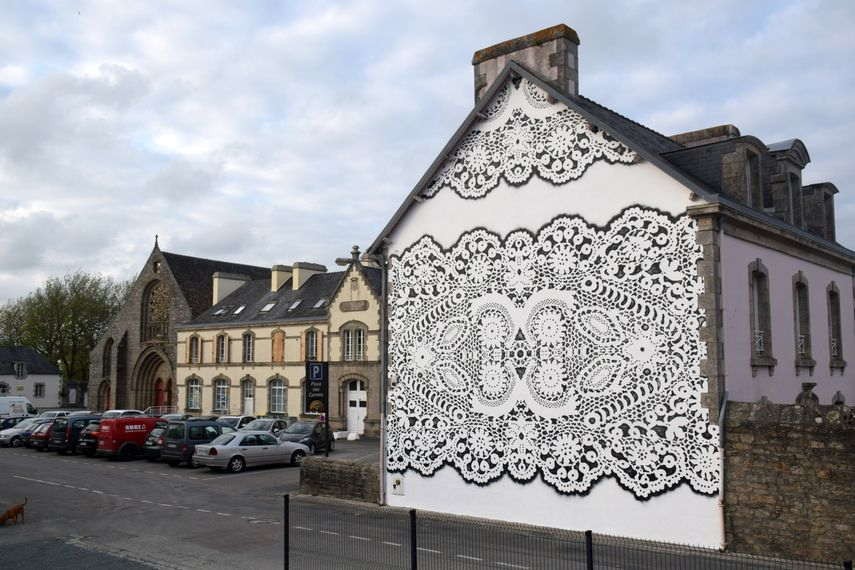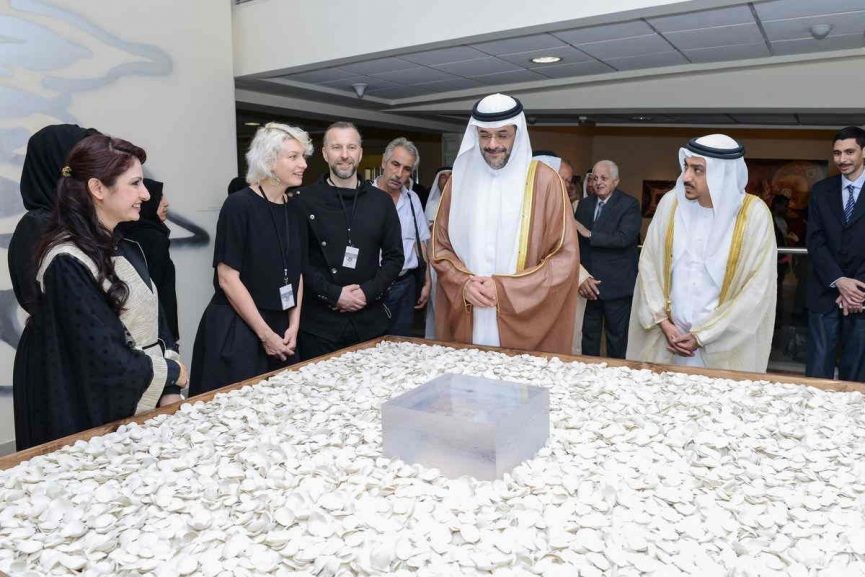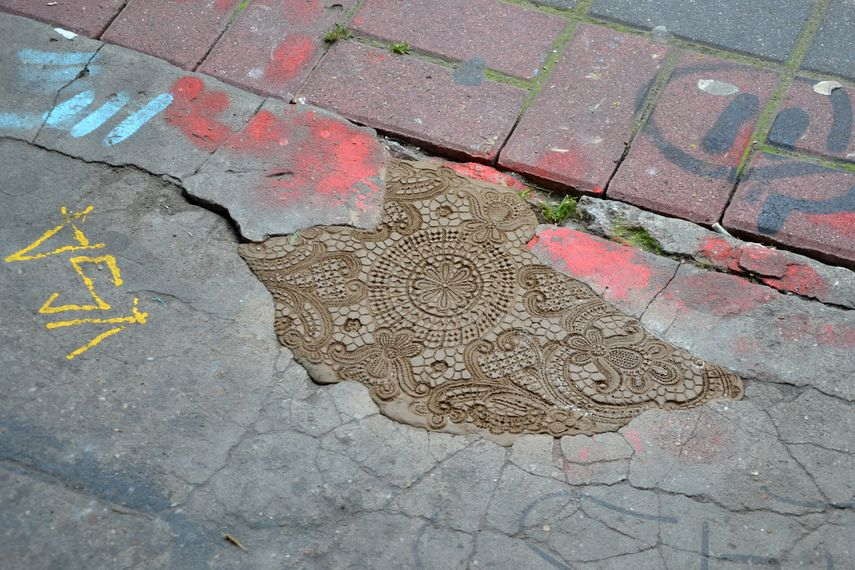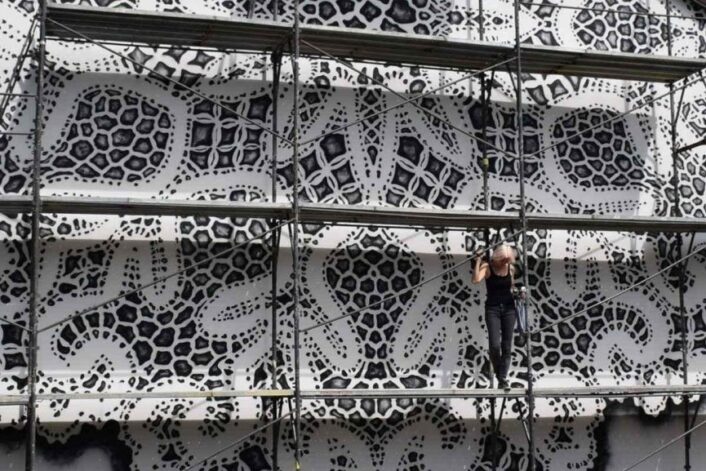
Image courtesy of Widewalls
Polish street artist NeSpoon makes sculptures, video installations and screen printings as well as murals based upon art that is based upon intricate lacework patterns. She says: “I use lace patterns because every lace contains a universal aesthetic code that is deeply embedded in most cultures around the world. When I add colors to this patterns, people sometimes say that I am inspired by Tibetan Mandalas, Moroccan Ceramic or native pre-Columbian art. Lace patterns contain a basic code of the harmony, which is common for most of the people. It is very ancient code, I think, it is older than the humanity. We can find it all around us in the nature: in the shape of small sea creatures, flowers, snowflakes. The harmony and symmetry of lace patterns are biological, alive, not mathematical, machine generated.”
Her work can be found everywhere from Poland, Italy, Netherlands, Ireland and France to Russia, Hong Kong, Australia, and New Zealand as she often beautifies abandoned and forgotten spaces. She always investigates each the context of each installation, finding her inspiration from local textiles arts.
Enjoy some of our favorite examples of her work!

Image courtesy of Inhabitat

Sharjah Art Museum, Sharjah, UAE, 17.12.14.-30.01.15.
Artwork made for “Art & Science” – 17th Islamic Arts Festival.
The exhibition “Entanglement” is composed of two parts: “Spore” and “Thoughts”. Both combine decorative elements used for centuries in the arts of Islam and patterns of traditional Polish laces woven by folk artists.
From the exhibition text:
The same symmetrical patterns are present in the art of pre-Columbian Indians, the Tibetan mandala, in Polish handmade laces or the Islamic ornaments. Coming from the interior of the human soul codes of beauty and harmony are quite universal around the world. This shows that at a deep, unconscious level, all derive from the same source, all come from one place.
Image courtesy of Behance

Image courtesy of the Starak Foundation
